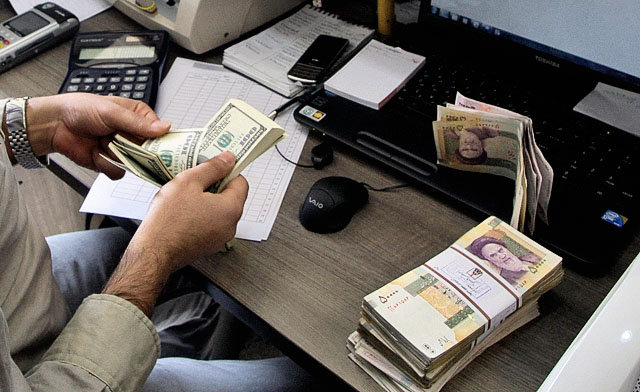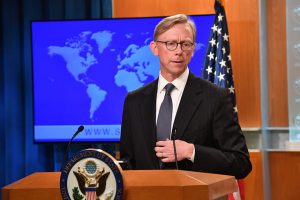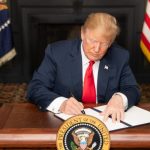by Djavad Salehi-Isfahani
Four months after the collapse of the rial earlier this fall, Iran’s economy is still reeling from its effects. The rial lost 40% of its value in one week late last September, succumbing to accumulating pressures from free spending by the Ahmadinejad government, overvaluation caused by years of booming oil revenues, and international sanctions.
Financial sanctions imposed by the United States against third-party countries that trade with Iran have seriously disrupted Iran’s international trade, reducing its ability to sell its oil or spend the revenues from what it can sell. Sanctions have inflicted enormous pain on millions of Iranians, who have watched the boom of the last decade deteriorate into stagnation, inflation triple and critical items such as medicine disappear from stores. Iranians are meanwhile unsure who to blame, those who have imposed the collective punishment or their own government.
For the moment, there is no sign that what the West was hoping sanctions would do — soften the position of Iran’s leaders as a result of rising dissatisfaction — is actually happening. There are three reasons for this. First, the government has so far skillfully protected the poor from the worst aspects of the economic crisis. It has done so by offering cash payments (amounting to half the minimum wage for a family of four), and by keeping the price of basic necessities like food and fuel from rising as fast as inflation.
Second, those who suffer most — the salaried middle class — are least likely to pour into the streets in protest. And third, even those who believe that sanctions are the root cause of the current economic mess are not likely to ask their government to capitulate to Western demands.
Bringing inflation down and reviving investment are the two biggest challenges that the Iranian government currently faces. There are signs that inflation, after jumping to 4.5% per month (equal to an annual rate of 70%) during October and November, is coming down. Monthly inflation was 2.5% in December and fell to 1.7% in January 2013.
The moderation in inflation is no thanks to Iran’s free-spending president, whose two most important programs — cash subsidies and an expensive low-cost housing program — have been largely financed by printing money. The parliament has been trying to rein him in, and even tried to fire his Central Banker last month on a charge that he had raided the reserves of member banks, a move that had ironically helped reduce inflation.
But success in harnessing inflation will not shield the population from the worst effects of the sanctions. The government has done well in fighting them by finding alternative sources of supply for basic imports, and has successfully engaged in bilateral trade with several countries that are willing to withstand the wrath of Washington such as China, India, Turkey and Argentina, but it will have a very hard time getting private investment back on track with cumbersome arrangements for international trade.
Iran’s private sector is the main source of jobs for the country’s 20 million youth, and the only hope for its 4 million unemployed. The more realistic value of the rial after devaluation has done much to bring the productivity of these youth closer to their wages, which should boost their employment. But uncertainty surrounding the future of the dispute with the West will keep private money on the sideline and in liquid assets, waiting for a sign that normal times are about to return.
Remarks by US Vice President Joe Biden and Iran’s Foreign Minister Ali Akbar Salehi this past weekend that raised the prospects of direct talks between the US and Iran was perhaps a sign, for it immediately sent the rial up against the dollar by nearly 5% in the free market for foreign exchange. If this means that Iran’s private investors have not given up on the country’s future, it should serve as an inducement for Iranian leaders to do their best to reduce tensions with the West — even better, to resolve the nuclear standoff once and for all.






If the nuke issue was really paramount, it would not be hard to reach a deal. But the evidence suggests this is only a red herring to disguise the real US objective — regime change. Negotiiations are not going anywhere as long as the US maintains this objective.
RE: “The rial lost 40% of its value in one week late last September, succumbing to accumulating pressures from free spending by the Ahmadinejad government, overvaluation caused by years of booming oil revenues, and international sanctions.”
MY COMMENT: It is possible that currency manipulation by the U.S. is partly responsible (see below). I have read that the U.S. also used currency manipulation against the Soviet Union (back in the 1980s).” ~ Djavad Salehi-Isfahani
SEE: “Iran: Who’s Diddling Democracy?”, by: Steve Weissman, t r u t h o u t, 6/18/09
RELEVANT EXCERPT: . . . Back in 2007, ABC News reported that President George W. Bush had signed a secret “Presidential finding” authorizing the CIA to mount covert “black” operations to destabilize the Iranian government. According to current and former intelligence officials, these operations included “a coordinated campaign of propaganda broadcasts, placement of negative newspaper articles, and the manipulation of Iran’s currency and international banking transactions.” . . .
SOURCE – http://archive.truthout.org/061809J